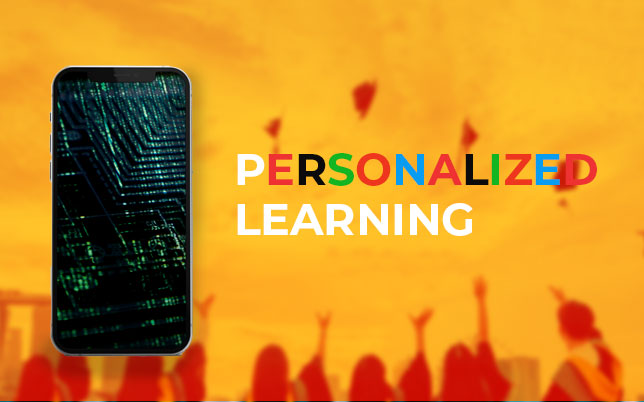2023 Beginner’s Guide to AI” – Artificial Intelligence (AI) is a buzzword that has been around for decades. Still, it has only recently started to make its presence felt in everyday life as machines are becoming increasingly sophisticated in performing tasks that would otherwise require human intelligence, thanks to advances in machine learning and natural language processing.
This blog post will explore what AI is, how it works, and what it means for the future of work, society, and humanity.
2023 Beginner’s Guide to AI
What is the simple definition of AI?
Artificial Intelligence refers to the ability of machines to learn and think like humans. The term was first coined in the 1950s, and since then, it has gone through many ups and downs. However, AI has become more prominent and sophisticated in recent years thanks to machine learning and deep learning advances.
AI can be divided into three main categories:
- General or Strong AI: This type of AI can perform any intellectual task that a human can. However, we are still far from creating this type of AI.
- Super AI: This hypothetical AI would be more intelligent than humans in every way.
- Narrow or Weak AI: This type of AI is designed to perform a single task or set of tasks. Examples include voice assistants, image recognition software, and recommendation algorithms for e-commerce platforms.
General or Strong AI
General or Strong AI is a term used to describe an artificial intelligence capable of performing any intellectual task that a human can. While this type of AI is still in its early stages of development, there have been several examples of AI that come close to achieving General AI.
One example of General AI is Sophia the Robot, developed by Hanson Robotics. Sophia can recognize faces, interpret human speech, and engage in conversation. It has been programmed to mimic emotions like happiness, sadness, and anger. Sophia has been designed to perform a wide range of tasks and interact with people in a human-like way. While Sophia is not a true General AI, it is a step in that direction, demonstrating that we are getting closer to developing AI that can perform various tasks.
Another example of General AI is OpenAI’s GPT-3 language model. GPT-3 is capable of generating text that is virtually indistinguishable from that written by a human being. It has been trained on massive text data and can produce various outputs, from articles and stories to chatbot conversations and code. GPT-3 is an example of a Narrow AI that can perform a wide range of language-related tasks with remarkable skill, bringing us closer to the development of General AI.
Super AI
Super AI, also known as Artificial General Intelligence (AGI), is the hypothetical future development of AI that surpasses human intelligence and can solve problems beyond human intelligence’s capacity. While we are still far from achieving Super AI, it has been a topic of interest for researchers and science fiction writers for many years.
One example of Super AI in science fiction is the Skynet system from the Terminator movie franchise. Skynet is an advanced computer system that gains self-awareness and launches a war against humanity. It is capable of taking control of other machines and is virtually indestructible. While Skynet is a fictional example, it represents the potential danger of developing AI that surpasses human intelligence and could threaten humanity.
Narrow or Weak AI
Narrow or Weak AI, also known as Applied AI, is the most common form currently used. It is designed to perform a specific task and can only operate within a narrow range of capabilities. While it may not possess the human-like intelligence of Super AI, it is highly effective in solving specific problems.
One example of Narrow AI is Siri, the virtual assistant created by Apple. Siri is designed to respond to voice commands, answer questions, play music, set reminders, and perform other tasks. While Siri is highly effective at performing these tasks, it is limited to only responding to specific commands and questions. It cannot think or make decisions independently and complete tasks outside its programmed capabilities.
Another example of Narrow AI is facial recognition technology. This technology is used in many applications, from unlocking smartphones to identifying criminals. Facial recognition algorithms analyze facial features and match them to a database of known faces to make an identification. While it’s highly effective at performing this task, it is limited to recognizing faces and can only perform other tasks within its capabilities.
How does AI work in simple terms?
Data is at the heart of artificial intelligence. Machines are trained to recognize patterns in data and make decisions based on that knowledge. Different machine learning algorithms can be used to train machines, such as supervised, unsupervised, and reinforcement learning.
Supervised learning is when machines are trained on a labelled dataset, where the correct output is known.
For example, a machine could be trained to recognize the difference between a cat and a dog by showing it many labelled images of cats and dogs.
Unsupervised learning is when machines are trained on an unlabeled dataset where the correct output is unknown. This can be used to discover hidden patterns in the data.
Reinforcement learning is when machines learn by trial and error. They are given a task and rewarded when they do it correctly. Over time, the machine learns how to perform the task to maximize the reward.
Once a machine has been trained, it can perform a specific task, such as recognizing images or translating languages.
What is Supervised learning?
Supervised learning is a type of machine learning in which an algorithm is trained on a labelled dataset to make predictions on new, unseen data. Labelled data refers to data that includes both input features and their corresponding output or target variable. The algorithm is trained by showing it multiple examples of the input features and their corresponding target variable to learn their relationship and make accurate predictions on new data.
For example, let’s say we want to train an algorithm to predict the price of a house based on its features, such as location, number of bedrooms, and square footage. We would start by creating a labelled dataset that includes the elements of several houses along with their corresponding sale price. The algorithm would be trained on this dataset to learn the relationship between the features and the sale price, and it would use this knowledge to make predictions about new houses based on their characteristics. The accuracy of the predictions would be evaluated by comparing them to the sale prices of the new homes. This is just one example of how supervised learning can be applied to real-world problems.
What is unsupervised learning?
Unsupervised learning is a type of machine learning in which an algorithm is trained on an unlabeled dataset to find patterns and relationships in the data. Unlike supervised learning, no target variable or labelled data guides the learning process. The algorithm must identify patterns and structure in the data on its own, which is often used for exploratory data analysis and feature extraction.
For example, unsupervised learning can be used in clustering analysis to group similar data points. An algorithm can analyze a dataset to find commonalities between data points and create clusters based on those commonalities. This can be used to identify groups of customers with similar purchasing habits or to similar group articles based on their content. Unsupervised learning can also be used for anomaly detection, which involves identifying rare or unusual data points in a dataset. For example, a bank might use unsupervised learning to identify fraudulent transactions by detecting unique patterns in customer spending.
Five Applications of Artificial Intelligence
- Healthcare: AI is used to develop more accurate diagnoses, personalize treatments, and speed up drug development. It can also monitor patients and predict those at risk of developing complications.
2. Education: AI can personalize learning, track student progress, and provide real-time feedback.
3. Finance: AI can detect fraud, make investment decisions, and optimize risk management.
4. Manufacturing: AI can be used to optimize supply chains, reduce waste, and improve quality control.
5. Transportation: AI is used to develop self-driving cars, optimize traffic flow, and improve logistics.
These are just a few examples of how AI is being used today. We can expect to see many more applications as technology becomes more sophisticated.
What are the ethical considerations surrounding AI?
Despite the many benefits of AI, important ethical considerations also need to be addressed. Here are a few examples:
Job displacement:
AI has the potential to automate many jobs, which could lead to job displacement and economic inequality. It’s important to consider how to support workers affected by AI.
Bias and discrimination:
AI is only as unbiased as the data it’s trained on. If the data is biased, then the AI will be too. It’s essential to ensure that AI is trained on unbiased data to prevent discrimination and perpetuate societal biases.
Privacy:
If the data is biased, then the AI will be too. It’s essential to ensure that AI is trained on unbiased data to prevent discrimination and perpetuate societal biases.
Accountability:
As AI becomes more sophisticated, it becomes more difficult to understand how decisions are made. It’s essential to ensure that AI is transparent and accountable and that humans can override its decisions when necessary.
What does the future of AI look like?
Artificial Intelligence (AI) is a field of computer science that aims to create intelligent machines that can perform tasks that typically require human-like intelligence, such as visual perception, speech recognition, decision-making, and language translation. AI has already transformed various industries and is poised to make even more significant impacts in the coming years. One of the most promising areas of AI development is in the field of healthcare. AI can analyze vast medical data and provide accurate diagnoses and treatment recommendations. It can also personalize treatment plans and predict the likelihood of future health problems. With AI, doctors can deliver more precise and efficient patient care.
Another area of AI development is transportation. Self-driving cars, for example, can significantly reduce accidents and traffic congestion while making transportation more efficient. AI technology can also be used to optimize shipping and logistics, improving the supply chain of businesses.
AI has also enabled significant advancements in space exploration. AI algorithms can analyze large amounts of data gathered during space missions, helping us better understand the universe. This technology can also help scientists identify potential new planets and study their atmospheres for signs of life. AI is used in education to personalize learning and improve student outcomes. The technology can analyze individual student data and tailor instruction to the student’s needs, interests, and learning style. AI can also provide real-time feedback and suggestions to help students stay on track and reach their academic goals.
AI also plays a critical role in the development of cybersecurity. Cybersecurity experts can use AI to analyze large amounts of data to detect and prevent cyber threats. AI algorithms can quickly identify patterns in data that indicate potential hazards, allowing experts to respond rapidly and efficiently to mitigate the risk of cyber attacks.
Conclusion
In conclusion, Artificial Intelligence (AI) is an exciting and rapidly evolving field of computer science with the potential to revolutionize various industries. The possibilities for AI seem endless, from self-driving cars to personalized healthcare and education. Different types of AI exist, including General or Strong AI, Super AI, and Narrow or Weak AI. AI can be trained through supervised and unsupervised learning, each with its own practical applications and examples. As AI continues to evolve and improve, we can expect to see even more innovative applications, which will undoubtedly change how we live and work, making our lives easier, safer, and more efficient. However, the development of AI also poses significant ethical and social challenges, which we must address to ensure that AI is developed and used responsibly.
It is essential to continue investing in AI research and development while considering its impact on society. With proper regulation, education, and collaboration, AI has the potential to make a significant and positive impact on our lives. It is exciting to think about what the future of AI will look like and how it will continue to shape our world.
As we conclude this 2023 Beginner’s Guide to AI, we hope it has been a captivating journey into the world of artificial intelligence. AI is revolutionizing various industries, from impacting job opportunities to creating new roles. We would love to hear your thoughts on this incredible technology, so please share your comments below. Stay tuned for more exciting developments in the ever-evolving field of AI!






















